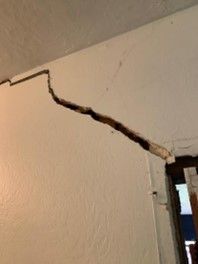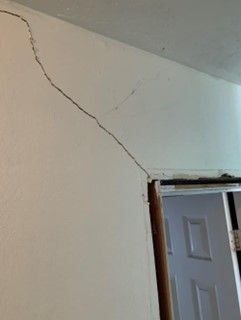Innovative Solution: Using Polyurethane Foam to Lift Sinking House Foundations
In the realm of construction and repair, innovative solutions often emerge to address age-old problems. One such advancement is the use of polyurethane foam by companies like Ro-Berg Concrete Repair Specialist to lift and level sinking house foundations. This cutting-edge technique offers numerous benefits over traditional methods, providing homeowners with a reliable and efficient solution to their foundation issues.
Polyurethane foam has gained popularity in the construction industry for its versatility and effectiveness in various applications. When used for foundation repair, it offers several advantages, including minimal disruption to the property, quick installation, and long-lasting results. Let's delve deeper into how this revolutionary approach can effectively address foundation problems and restore stability to a home.


Foundation Repair as easy as 1…2…3
Step One
A hole or series of holes are drilled along the exterior walls of your home. These holes are the size of a dime.
Step Two
An injection port is installed, and foam is injected under the house foundation. The foam spreads under the slab and begins to expand. This process is conducted until the polyurethane foam has compacted the soil under the house and begins to lift the structure.
Step Three
Once the foundation has reached its final elevation, the holes in the concrete are patched.
Sounds easy, right? You may be wondering, “How long is this process?” In most cases it takes only one day to lift and support a house foundation. Because each foundation need is different this length can vary.
Signs of Foundation Issues
Before exploring the solution, it's crucial to recognize the signs indicating potential foundation problems. Here are ten common indicators that may suggest your house foundation requires attention:
Cracks in Walls: Vertical or horizontal cracks appearing on interior or exterior walls can signal foundation settlement.
Uneven Floors: If you notice sloping or uneven floors, it could be a sign of foundation settlement or shifting.
Doors and Windows Misalignment: Difficulty in opening or closing doors and windows, or gaps around them, may indicate foundation movement.
Sticking Doors and Windows: Doors and windows that stick or jam could be a result of foundation shifting, causing misalignment of frames.
Cracks in the Foundation: Visible cracks in the foundation itself, especially wider than a quarter-inch, are a clear sign of structural issues.
Bowing or Leaning Walls: Walls that appear to be leaning inward or outward could indicate foundation movement and instability.
Sagging or Uneven Roofline: A sagging or uneven roofline might suggest underlying foundation issues affecting the entire structure.
Gaps Around Exterior Fixtures: Gaps between the exterior walls and fixtures such as chimneys or bay windows indicate foundation settlement.
Pooling Water Near Foundation: Excessive pooling of water near the foundation can lead to soil erosion and exacerbate foundation problems.
Cracks in Concrete Slabs: Cracks in concrete driveways, sidewalks, or patio slabs may signify underlying foundation settlement.
Using Polyurethane Foam for Foundation Repair
Now that we've identified the signs of foundation issues, let's explore how polyurethane foam can effectively address these problems. Ro-Berg utilizes a process called polyurethane foam injection to lift and stabilize sinking foundations.
Polyurethane foam injection involves drilling small holes 3/8 to 5/8 of an inch into the affected concrete slab or foundation. A specialized polyurethane foam is then injected into these holes, where it expands to fill voids and lift the foundation back to its original position. Unlike traditional methods such as concrete press piers or mudjacking, polyurethane foam offers several advantages:
1. Minimal Disruption: Polyurethane foam injection requires only small access holes, minimizing disruption to landscaping and property.
2. Quick Installation: The process of injecting polyurethane foam is relatively quick compared to traditional methods, allowing for faster repairs.
3. Lightweight Material: Polyurethane foam is lightweight yet incredibly strong, providing durable support without adding significant weight to the foundation.
4. Waterproofing Qualities: Polyurethane foam is resistant to water, preventing future issues related to moisture damage or soil erosion.
5.
Long-lasting Results: Once injected, polyurethane foam permanently stabilizes the foundation, offering lasting results that withstand the test of time.
By addressing foundation issues promptly and effectively with polyurethane foam injection, homeowners can safeguard their investment and restore stability to their properties. Whether dealing with minor settling or significant foundation problems, this innovative solution offers a reliable and efficient way to lift and level sinking house foundations.
CONTACT INFORMATION
Phone: (281) 706-0474
Email: luke@ro-berg.com
Location: We serve Houston and the surrounding area. (Offices in Alvin)
All Rights Reserved | Ro-Berg
